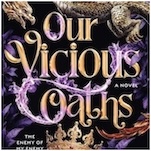Three Kings: Spotlight on the Italian “Noble” Grapes
“Noble” is a term used (especially in France) to denote the grapes from which the most exceptional wines are produced. The noble French reds are well known to most people who own a corkscrew: Cabernet Sauvignon, Merlot, Syrah and Pinot Noir.
The Italian “nobility” are less talked about, which is odd when you consider how much impact the Roman Empire had on the art of winemaking. Rustic table wines are made all over Italy from a staggering number of grape varietals. But Italy also has its viticultural monarchs, wines that have incredible structure and intensity, are cellar set-pieces, and make rather incredible special occasion drinks. In fact, open one of these guys and that is your special occasion.
Vino Nobile di Montepulciano DOCG
Not to be confused with Montepulciano d’Abruzzo (made in the Central/South Italy from a grape called Montepulciano). This wine comes from the vineyards surrounding the Tuscan town of Montepulciano, and its foundation is the great shape-shifter grape known as Sangiovese.
Sangiovese means “blood of Jove,” to give you an idea of its character as well as its importance to Italian winemaking. The Greco-Roman god of the sky was a notorious shape-shifter himself, often transforming into a human or animal in order to have his way with mortal women. One such encounter resulted in the birth of Dionysus, the god of wine. Sangiovese is the building block for every roughneck straw-basket Chianti you’ve ever encountered. It also makes some of the most sublime wines on earth.
Sangiovese is a deep purple grape that tends to make wines with very high acidity, moderate to high tannin content, and a relatively light color. Many winemakers blend it with other grapes to soften it. But when handled right, there is no need. This grape is the most widely planted in Italy for a reason.
Exemplar: Avignonesi 2011 Vino Nobile di Montepulciano DOCG
Avignonesi is a really old winery in Italy’s oldest DOCG. But today the winery combines its sense of history with a fresh, modern, sustainability-forward approach, and is creating wines that are 100% organic and biodynamic. Whether that accounts for the epic tastiness of this wine I cannot tell you. Vino Nobile de Montepuciano is required by law to contain 70% Sangiovese, and many, if not most, producers do cast a few supporting players. Not these guys. The Avignonesi 2011 Vino Nobile is a 100% Sangiovese wine from about five different vineyards in the Montepulciano DOCG. Their vines range from 10-40 years old and tend to sit on the kind of alkaline soil this grape happens to love. The wine features intense aromatics (for me, sour cherry with some spicy sub-notes and a vague hint of mint). This wine is delicate but by no means timorous—medium body, a strong cherry character grounded by herbaceous notes, and a very soft, very lingering finish. Youthful, accessible, wonderful. And of the three, a great value for beauty and sophistication without breaking the bank.
-

-

-

-

-

-

-

-

-

-

-

-

-

-

-

-

-

-

-

-

-

-

-

-

-

-

-

-

-

-

-

-

-

-

-

-

-

-

-

-








































